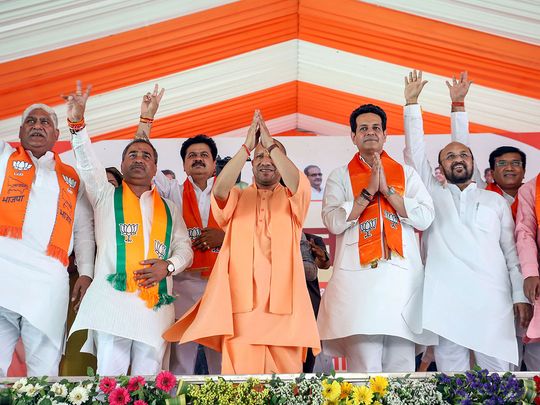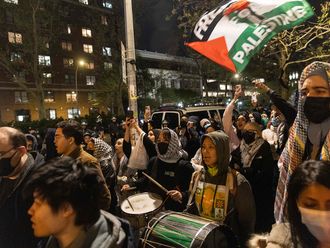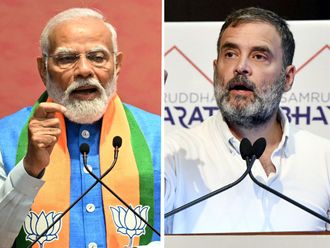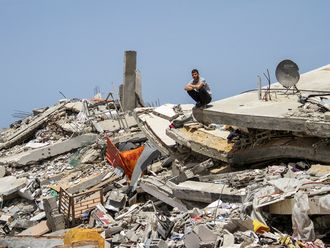
From the first Prime Minister, Jawaharlal Nehru, to the incumbent, Narendra Modi, nine of India’s fourteen heads of government have been elected from Uttar Pradesh, or UP as it is popularly known.
UP is home to over 241 million people, which by itself makes it more populous, if we exclude India, than all but three other countries in the world: China, the United States, and Indonesia. Each general election, it also returns 80 out of the 543 members of the Lok Sabha of India’s parliament. In other words, more than one out of seven Indian lower house lawmakers are elected from UP.
Naturally, UP is pivotal to who forms the national government. It also acts as a bellwether state for political trends and electoral outcomes. Rarely is a party that loses big in UP still able to rule at the centre. For the Bharatiya Janata Party (BJP), UP has been a bastion for over three decades, but especially after Narendra Modi chose to contest from Varanasi in 2014. In that election, the BJP got 71 out of 80.
In the last hustings, their tally, though down by nine, was still an impressive 62. The upcoming election, whose first phase on April 19 is already upon us, will cover parts of UP too. No wonder the Hindi heartland state has been a focal point for political analysts, with the performance of the BJP and its competitors under close scrutiny.
"Double Engine Sarkar"
The BJP, under the central leadership of Narendra Modi and state leadership of Yogi Adityanath, has maintained a formidable hold on UP’s electorate. How has this been accomplished? The party’s long-term strategy has three key components.
The first of these is to leverage the “Double Engine Sarkar,” the same ruling dispensation at both centre and state, to propel the state forward with rapid development, especially in infrastructure. This is only possible because of massive and coordinated investments from the central and state exchequers.
The results are there for everyone to see. Once considered a backward, even “beemaru” (sick) state, UP today is chock-a-block with new airports, impressive bridges and roadways, and swanky government buildings.
Not just big-ticket projects, but toilets, homes, and schools for the underprivileged rural masses have made the real difference. The people are, naturally, enthused by the unprecedented progress.
Secret support for BJP
Secondly, the law-and-order situation in the state, which has improved dramatically under the no-nonsense disciplinarian administration of Yogi Adityanath. The de facto rule of goons, goondas, dons, and musclemen has practically ended.
The streets of the cities and towns are now more secure than earlier. The crime rates have reduced considerably. The “bad lands” of UP are no longer unsafe, especially for women.
Finally, and this part of the BJP’s strategy is rather controversial, is the consolidation of vote banks along religious lines. Traditionally, all political parties courted the large and, in places, influential Muslim population of UP, which is close to 20% overall, and much higher in certain districts. The BJP has, instead, gone in the opposite direction, choosing to ignore them almost completely.
This does not mean that Muslims do not enjoy access to government schemes in UP. Instead, the attempt has been to refuse to treat them as culturally separate or politically privileged.
For instance, a large number of state-funded Madrasas or religious schools are now required to have the same curriculum as ordinary schools or face derecognition. The BJP’s reformist policy is allegedly also garnering them the secret support of some sections of the Muslim community, particularly women.
Inauguration of Ram Mandir
In addition, the BJP has also reached out to disadvantaged sections with its many social welfare schemes. This has undermined and weaned away the traditional support of both the Samajwadi Party (SP) and Bahujan Samaj Party (BSP), its main rivals in the state.
The BJP has also harped on its nationalist and corruption-free credentials, as opposed to the supposedly selfish dynastic regional parties which ranged against it. The grand inauguration of the Ram Mandir has also consolidated its hold on its Hindu loyalists.
If the BJP’s main competitors in Uttar Pradesh are Sapa-Basapa or the SP and BSP, what of the Congress? The once-dominant Congress is a pale shadow of its glorious past. It is expected not to get more than one or two seats. Rahul Gandhi, their tallest leader, even lost the family pocket borough, Amethi, to Smriti Irani in 2019.
His mother and former Congress president, Sonia Gandhi, is not likely to contest from the other family seat, Rae Bareli, this time. As far as UP is concerned, the Congress, despite its pan-India presence, is not even a major player.
The SP and BSP have previously formed coalitions to challenge the BJP’s dominance, banking on their appeal among backward classes and Dalit communities, respectively. Each of these parties will be vying to increase their seat tallies, using a mix of identity politics, regional issues, and criticism of the incumbent’s policies.
However, despite the attempt to cobble together the I.N. D. I. A opposition alliance, the BSP has refused to be part of it. The divided and tottering opposition is therefore likely to aid the BJP’s bid to return to power. Their fragmented vote share will make it difficult for either SP or BSP to pose a formidable challenge on its own to the BJP.
The precise seat tally for the BJP will depend heavily on the execution of its campaigns and the changing political climate closer to the seven-phase poll, which extends from April 19 to June 1. Despite being in power both at the centre and the state for ten years, there is little anti-incumbency in evidence.
Instead, with its formidable organisational strengths plus the charismatic leadership of both Modi and Yogi, the BJP’s tally is likely to exceed the 62 seats won last time, possibly crossing even the 72 mark of 2014 to inch closer to an unprecedented 75.










